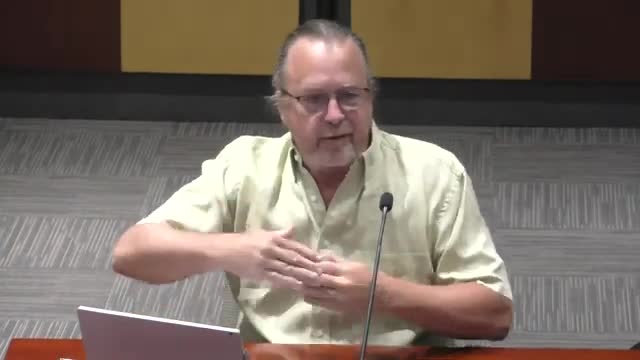City leaders clash over bike safety and traffic flow
August 15, 2024 | Lawrence, Douglas County, Kansas

This article was created by AI summarizing key points discussed. AI makes mistakes, so for full details and context, please refer to the video of the full meeting. Please report any errors so we can fix them. Report an error »

During a recent government meeting, a significant discussion emerged regarding the balance between accommodating bike traffic and maintaining efficient car travel in urban planning. A city official highlighted the challenges faced in creating bike-friendly environments on busy thoroughfares, noting that despite efforts such as painting shared lane markings, safety concerns persist due to high vehicle speeds and road design.
The official drew comparisons to previous projects, specifically referencing the redesign of 21st Street, where measures were implemented to slow down car traffic, such as bump outs. While these changes aimed to enhance bike safety, they inadvertently compromised vehicle commute times, raising questions about the effectiveness of such trade-offs.
Emphasizing the need for a holistic approach, the official advocated for infrastructure that supports both cyclists and motorists without sacrificing one for the other. They pointed out that successful urban designs in other cities prioritize dedicated lanes for bikes and pedestrians alongside efficient roadways for cars, ultimately fostering a more integrated transportation system.
The discussion also touched on the importance of language in planning documents, suggesting that the terminology used could unintentionally steer decisions towards compromises that hinder progress. The official expressed a desire for a future where urban redevelopment does not force a choice between bike safety and efficient car travel, but rather embraces a comprehensive strategy that accommodates all modes of transportation.
As the meeting concluded, it was clear that the commission is grappling with the complexities of urban design, seeking solutions that enhance safety and accessibility for all residents.
The official drew comparisons to previous projects, specifically referencing the redesign of 21st Street, where measures were implemented to slow down car traffic, such as bump outs. While these changes aimed to enhance bike safety, they inadvertently compromised vehicle commute times, raising questions about the effectiveness of such trade-offs.
Emphasizing the need for a holistic approach, the official advocated for infrastructure that supports both cyclists and motorists without sacrificing one for the other. They pointed out that successful urban designs in other cities prioritize dedicated lanes for bikes and pedestrians alongside efficient roadways for cars, ultimately fostering a more integrated transportation system.
The discussion also touched on the importance of language in planning documents, suggesting that the terminology used could unintentionally steer decisions towards compromises that hinder progress. The official expressed a desire for a future where urban redevelopment does not force a choice between bike safety and efficient car travel, but rather embraces a comprehensive strategy that accommodates all modes of transportation.
As the meeting concluded, it was clear that the commission is grappling with the complexities of urban design, seeking solutions that enhance safety and accessibility for all residents.
View full meeting
This article is based on a recent meeting—watch the full video and explore the complete transcript for deeper insights into the discussion.
View full meeting
